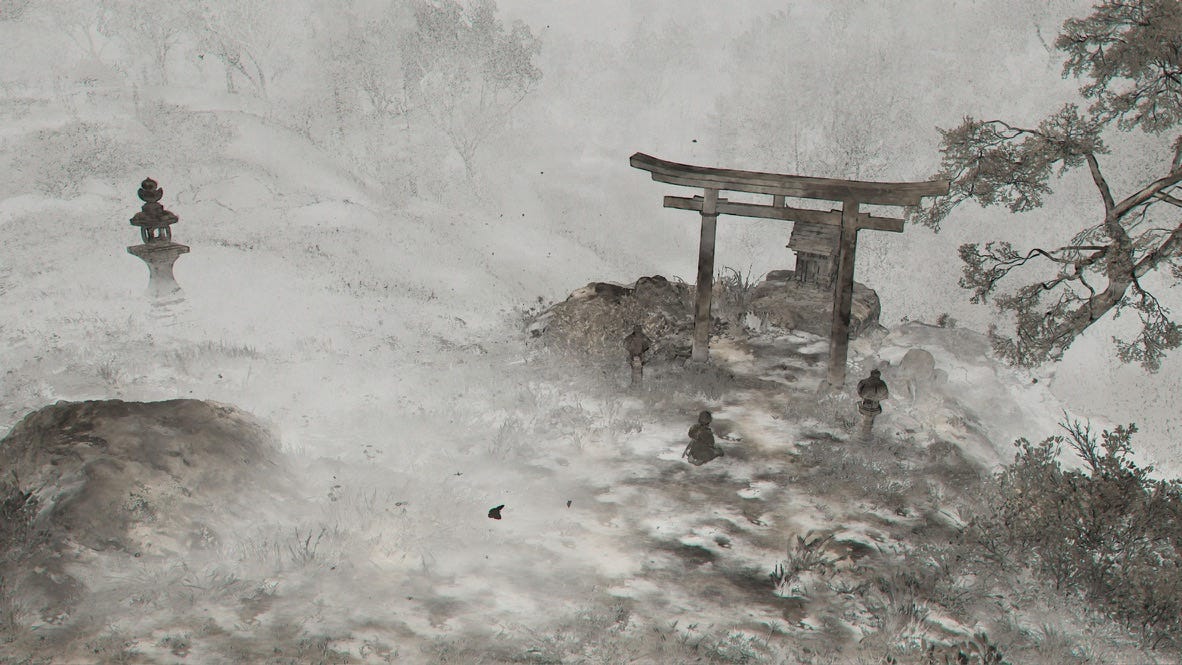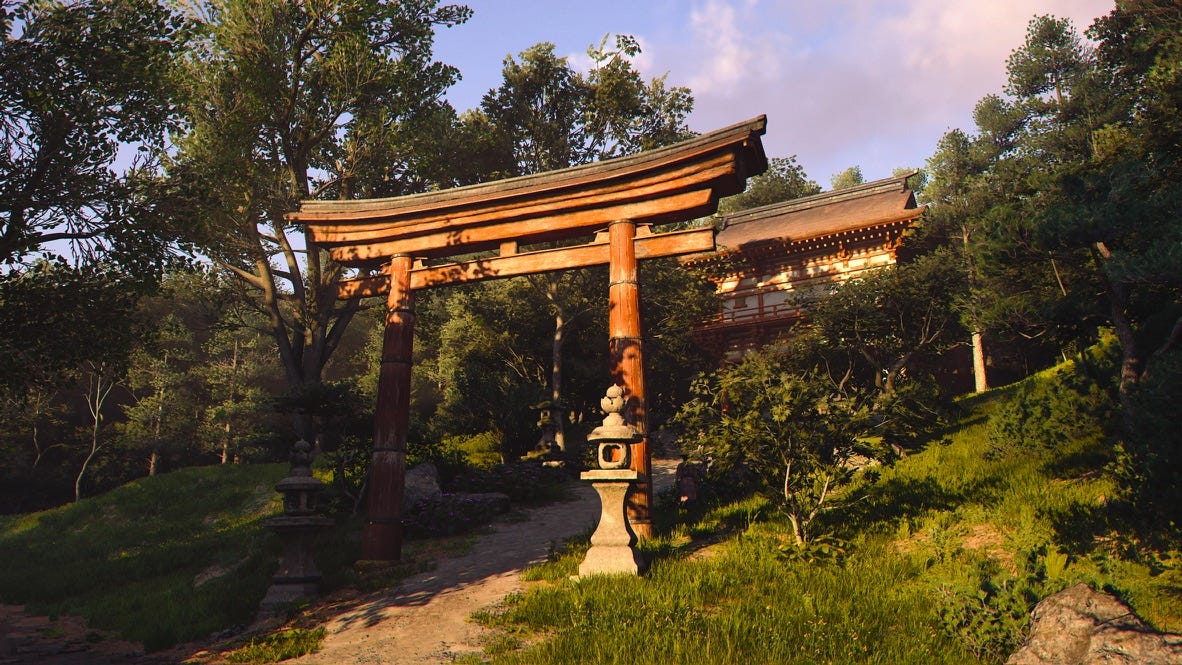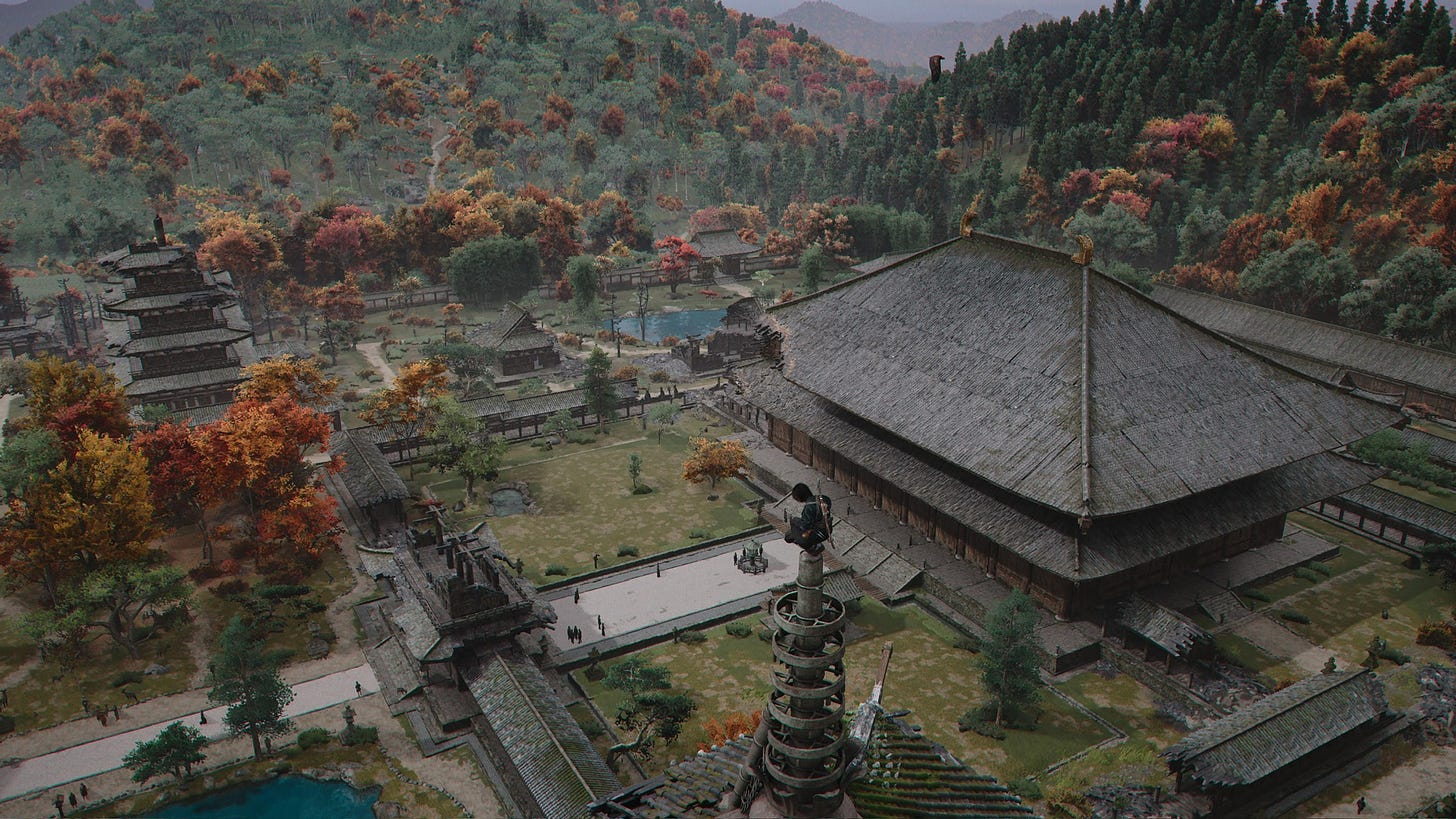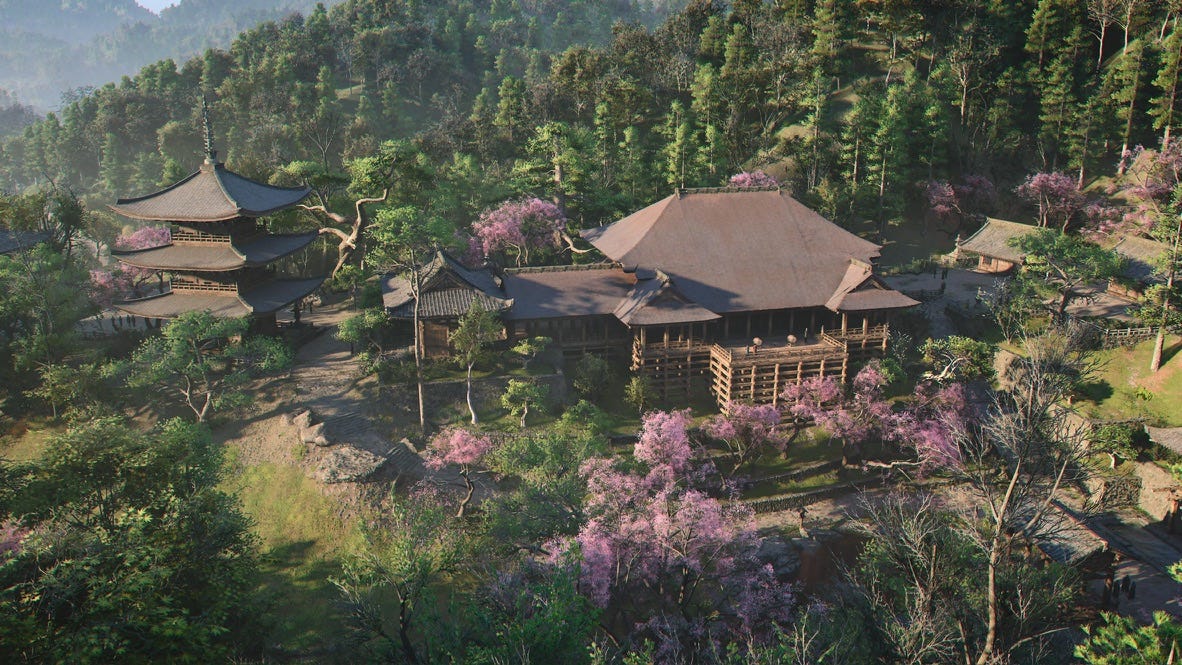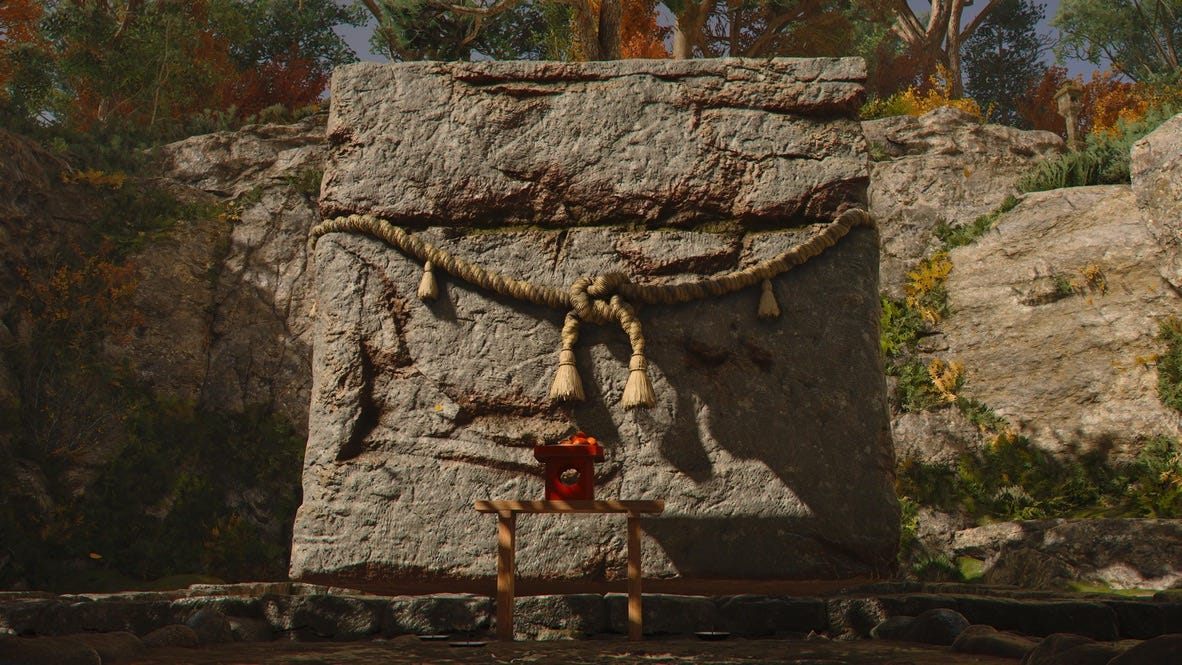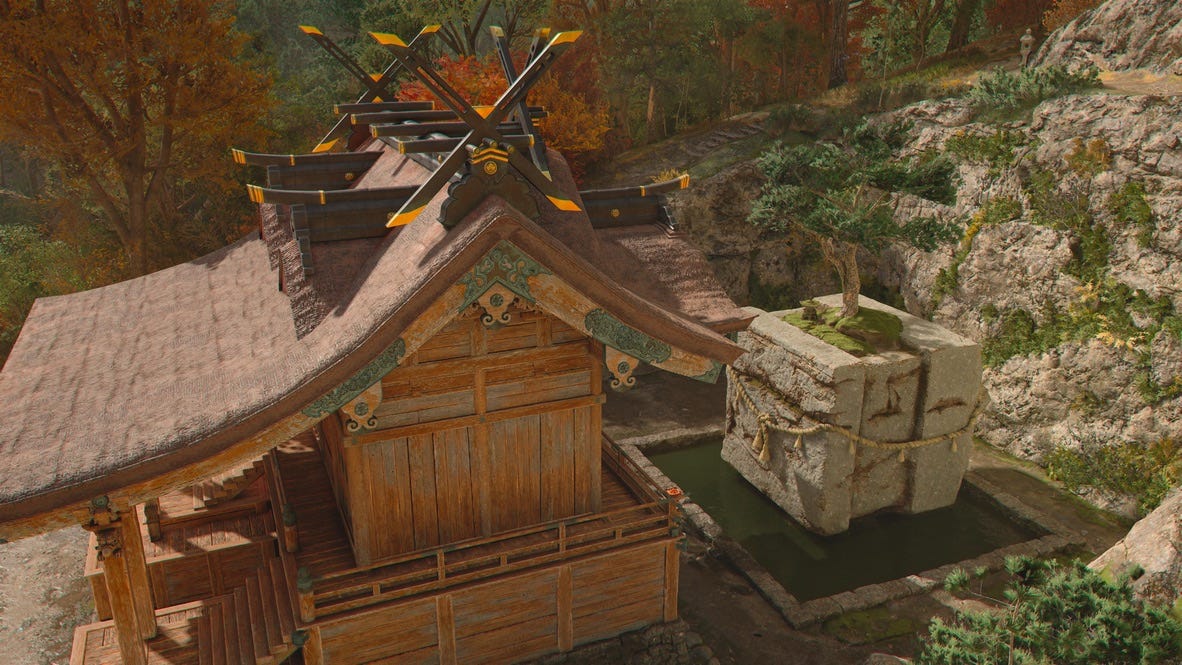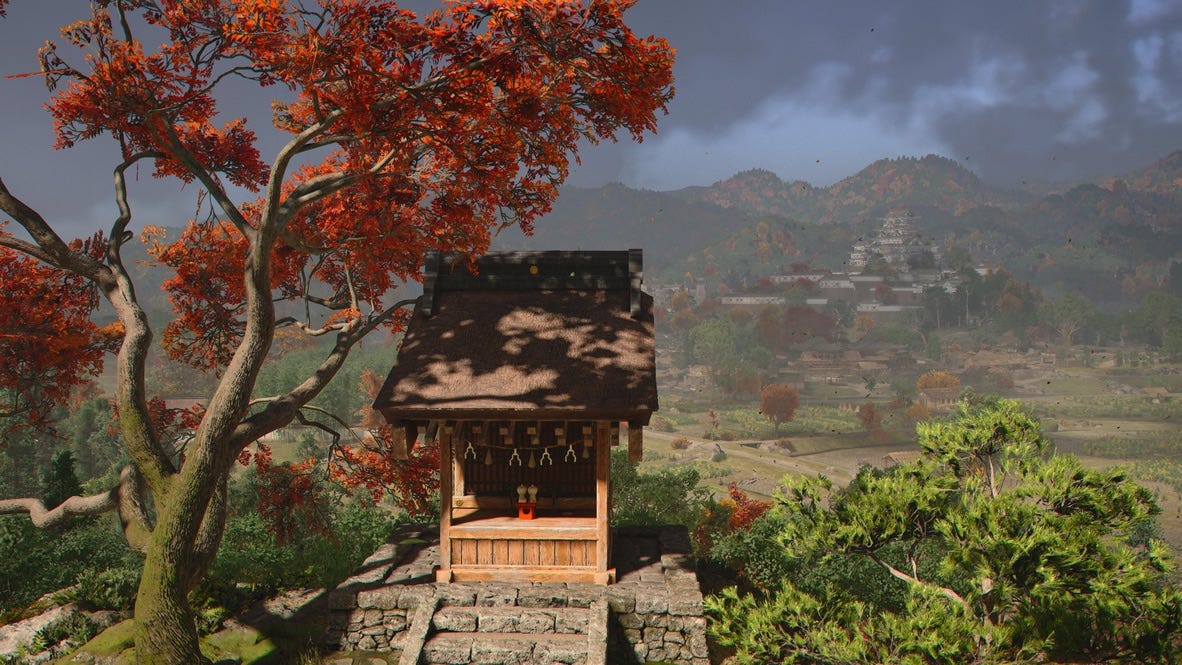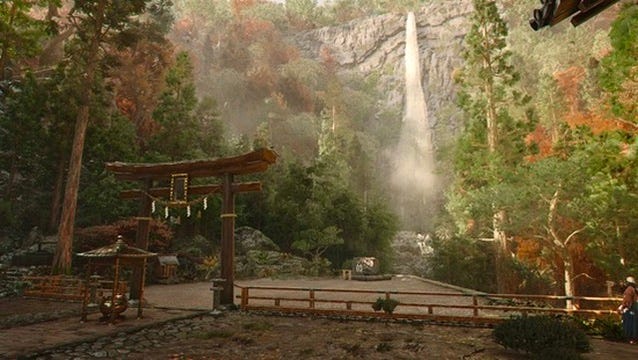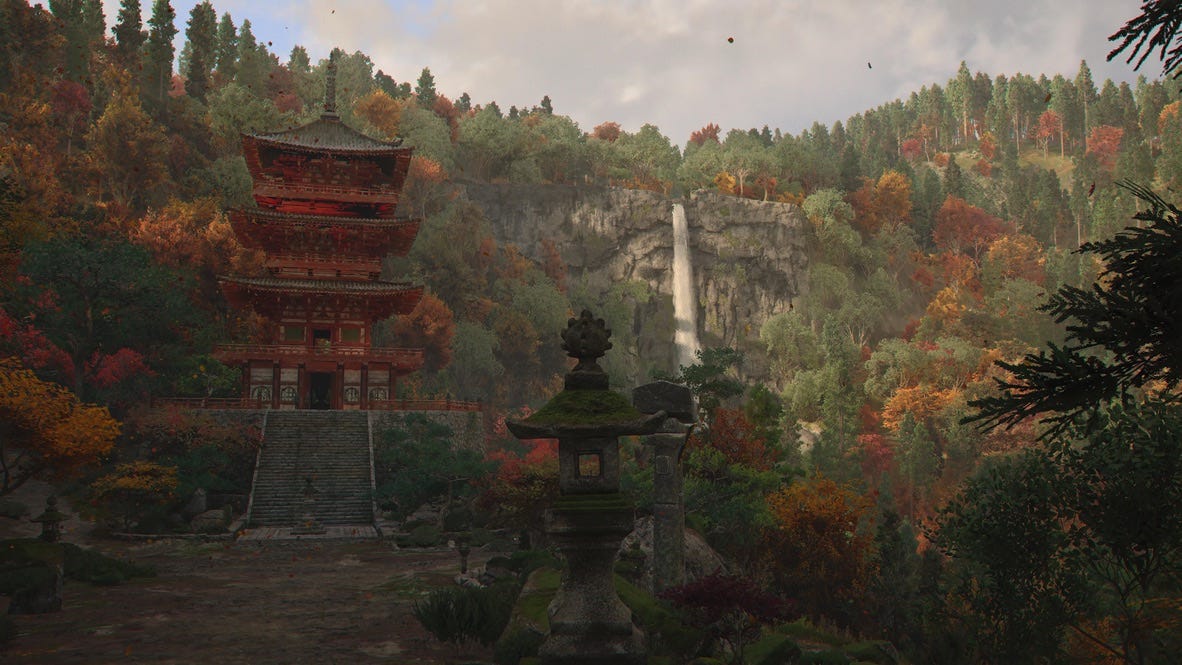Virtual Pilgrimages: Sites to Visit in the Open World of 'Assassin's Creed: Shadows'
The liminal spaces between Naoe and Yasuke...
While everyone else is playing and reviewing Assassin’s Creed: Shadows, I started doing what I do best; exploring. I did the initial Yasuke-centred prologue before jumping into the open world via Fujiyabashi Naoe, my headcanon main character. Her journey begins with the fall of Iga to Nobunaga’s forces and she then gains the ability to travel to the port town of Sakai and beyond.
I am a religious studies and Japanese media academic so this kind of game comes along once in a few years and every since time it happens, the maps get bigger, the graphics get better and the world feels a little bit more real.
The world map is expansive; it’s not quite as huge as the one in Odyssey or Origins but it’s still big. I’ve been playing for several days and have only unlocked maybe 20% of the map from Himeji, Kyoto and Nara, to Osaka and the mountain idyll of Koyasan. The map itself covers the old prefectures of Tamba, Wakasa, Omi, Yamashiro. Iga, Harima, Settsu, Yamato and Kii.
Access the Animus did a real-world map showing that the game basically covers Kansai. The full in-game map is also a gift to anyone who buys the Ultimate Edition but has also appeared on Reddit. However my go to are those interactive maps which have started popping up in the last few years.
Obviously, during this period, Kyoto is the main hub with other cities like Himeji, Nara, Osaka and Sakai. You can even visit Okishima (Cat Island) in the middle of Lake Biwa!
The game, which begins in 1572, is set around the Sengoku and Azuchi-Momoyama periods just before Japan went into two centuries of self-isolation. As a rsult there are three main kinds of religous sites: those for Shinto, Buddism and the odd Portequese site, such as Namban Temple in Kyoto which house Catholic artefacts, or small churches here and there.
Japan finally opened itself back up in 1853 when Matthew Perry arrived in the waters near Edo. To give you some reference, Rise of the Rōnin covers the period between 1853, 1858, 1863 and 1866-7 and 1858, including some of the same areas Assassin’s Creed uses in its Shadows narrative, even if the time period is centuries ahead. For a point of reference, the 2024 mini-series Shōgun is set in 1600, so a tad later and set in what we would identify as the Edo period.
Exploration is my favourite part of games so let me share some of my favourite with you. I also found a couple of suprises:
Wayside shrines and temples
These are Naoe’s first exposure after the initial missions. Praying at shrines and making offerings at Jizo statues give buffs or raise knowledge. They also offer a moment, while on the road, to remind yourself of the numinous nature of Japan.
Gion/Yasaka Jinja, Kyoto
Yasaka Jinja is one of my favourite shines within Kyoto, it’s just across Karasumadori on the edge of Gion, the geiko quarter of Kyoto.
It’s notable for its massive mon gate but also being very busy during New Year as a spot for Hatsumōde, the first shrine visit of the new year and it’s where I go when I’m in the city in January.
Yasaka Jinja is quite small but it also has two entrances, the one in-game being the main one.
Koyasan and Okunoin Cemetary, Kii
Koyasan is a sacred mountain and the place where Kukai (known posthumously as Kobo Daishō) is buried. As a result, it’s the base of x school and where people taking part on the Shikoku Henro Pilgrimage begin their pilgrimage.
Climbing up the mountain feels like one place the developers actually researched, especially once you pass into the temple complex of Koyasan Danjo Garan and further on to the vast cemetery of Okunoin, where Kobo Daisho (formally the monk, Kūkai) is buried, even if the mausoleum isn’t actually identified as such. I’ve been there so I knew where to find it within the game-world. You can then continue east past Kongobuji, down the mountain said to the large shrine of Kumano Hongu Taisha.
Tōdaiji, Nara
I went to Nara twice in my last trip to Japan alone so I was eager to see Tōdaiji and the Daibutsu, the giant Buddha statue in that large hall on the right.
And… you can’t go inside because the doors are locked.
Sigh. At least area is nice to look at. Oh and virtual deer (which you can’t pet :( !!!) wander the area quite happily.
Kiyomizudera, Kyoto
If you go to the real-world version of Kyoto, it’s required to visit Kiyomizudera temple. It’s a good thirty-minute walk uphill, past shops and when you get to the infamous stage, on a clear day you can see all the way to Kyoto Tower near Kyoto Station.
So the in-game version is easier to get to, and a shorter walk, up the mountain side. There’s also a Synchronisation point up here which makes it easier to revisit. The temple is devoted to Kannon Bosatsu and is known for the Otowa Stream, which is split into three streams allowing pilgrims to drink and choose health, wealth and prosperity (you’re supposed to choose two but most modern pilgrims will drink from all three using a ladle).
You can actually climb up to the main worship hall (the Honden), see the three streams and then make your way to the Synchronisation area which offers you a nice view of the Pagoda and the Honden. There are also monks chanting the Heart Sutra or playing music.
The sad thing about this temple is there is nothing inside the various temple buildings. You can go inside but they’re empty; they’re no statue of Kannon.
Itatehyōzu Jinja, Himeji
This is one of my personal favourite in-game shrines; it looks amazing in autumn and is also the shrine at the heart of the whole Assassin’s Creed: Shadows controversy. This shrine also has a micro corridor of torii gates, in the Inari-style, which is as close to Fushimi as we’ll get in this game.
I confess I love how beautiful this place is with the Autumn filter on, it looks magical and, no, aside from the season, I’ve not processed this image at all. The shrine feels like a proper bastion of peace and serenity and I specially love the epic cedar tree right in the middle of it.
I’ve not been to this shrine in years but it does remind me of one I visited in Ise, Tsukiyomi no Miya Shrine, which has an ancient sacred tree in its grounds. You don’t know ancient until you visit a tree which is older than modern history.
Ishinohōden, Takasago, Harima
Nothing says ‘sacred’ like a giant slab of rock festooned with sacred rope and offerings.
Welcome to Ishinohōden!
Again, this was a place I found by accident while exploring Harima and the area around Himeji. Next to a quarry is a beautiful shrine which focuses on an ancient square of stone. Again, this is a real location you can actually visit in Japan.
Alsao, as a bonus, right above the stone, is a smaller shrine with a lovely view of Himeji Castle.
Kumano Nachi Taisha/Seigantōji pagoda, Kii
This is on the eastern side of Kii, past Kumano Hongu Taisha and was one of my favourite spots to discover in the game. That waterfall is the highest in Japan at around 170 metres. From the shrine, you can then go up into the hillside and visit the pagoda and the smaller Kamakura Shine.
I stumbled across it during autumn, which is my favourite of the virtual seasons. The fact that is really what the place looks like makes it even more awe-inspiring.
These ar just some of the places in Assassin’s Creed: Shadows which make me love aspects of the game. It’s not perfect, still mired in controversy and there’s absolutely no sign of Fushimi Inari Taisha but there are still beautiful places if you have the time and inclination to hunt for them. I’m glad I did and I’ve not even uncovered the whole map yet.
Where are your favourite places in the game? Let me know in the comments!





